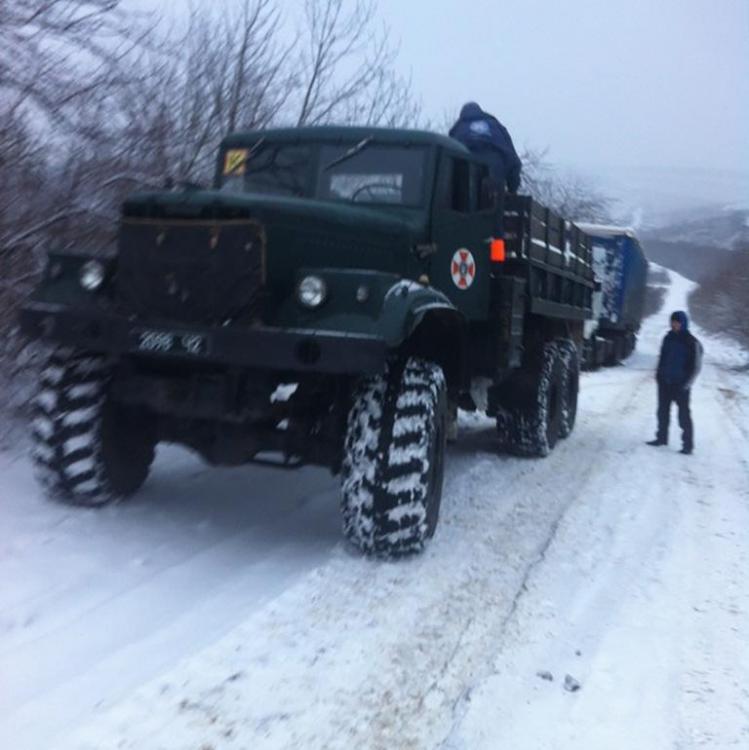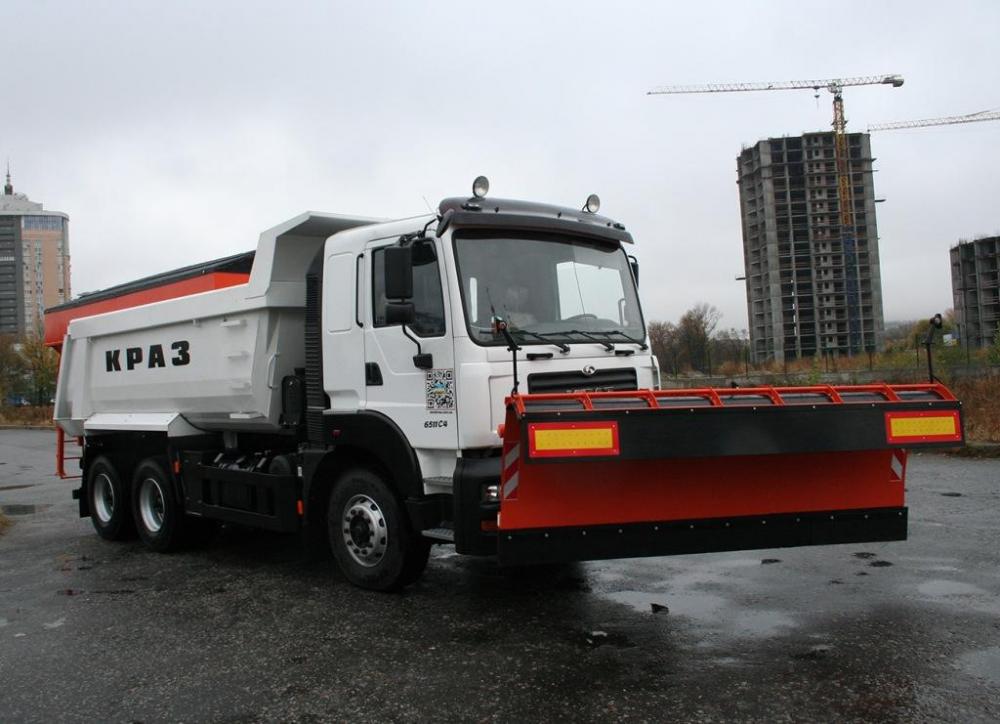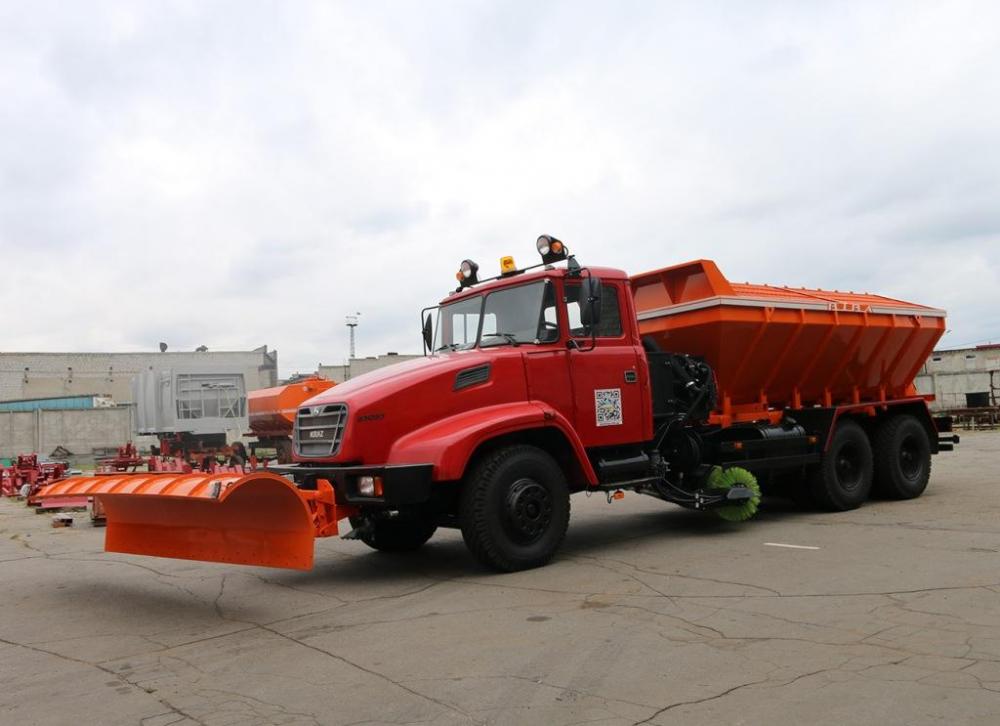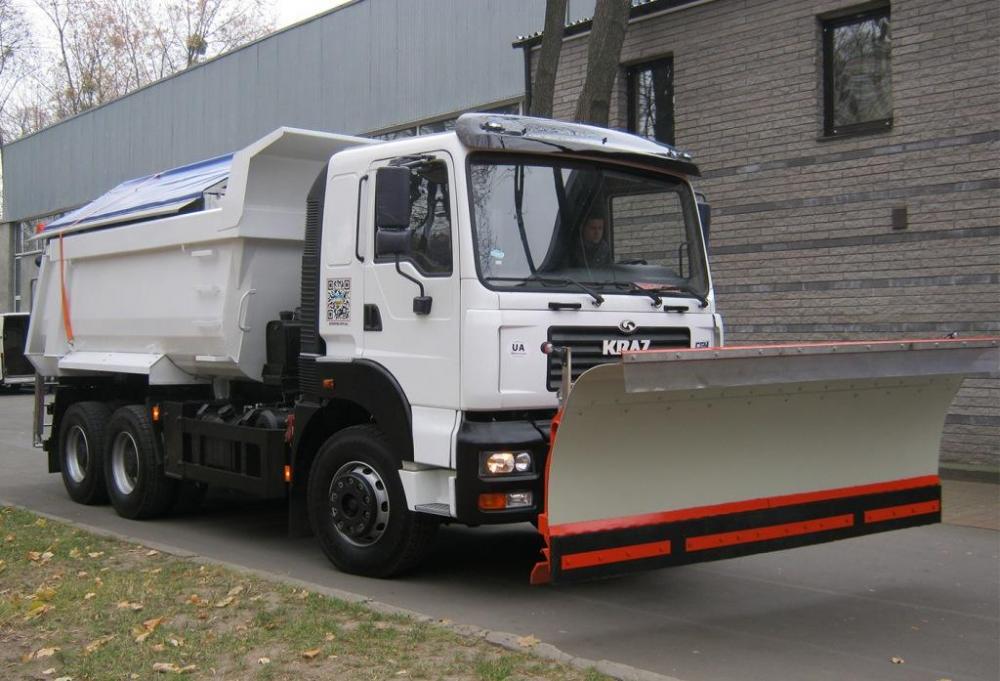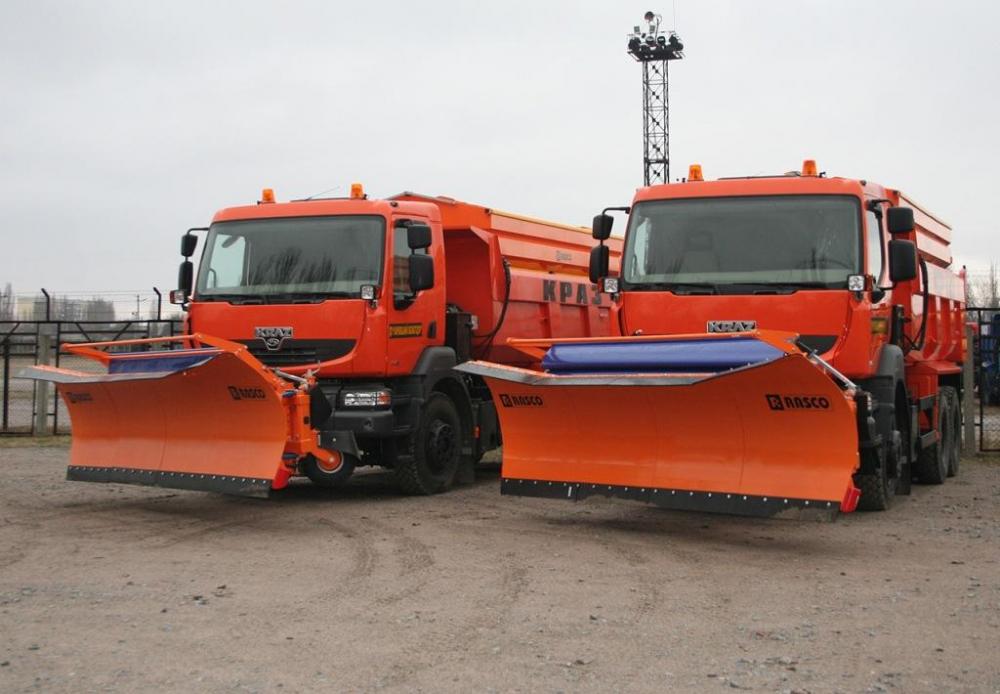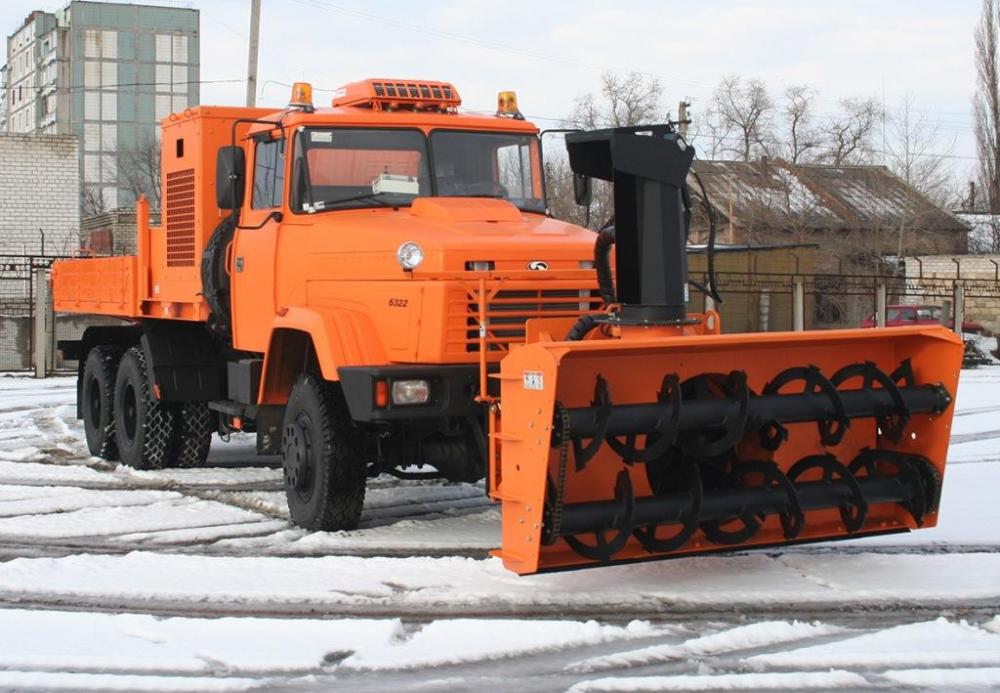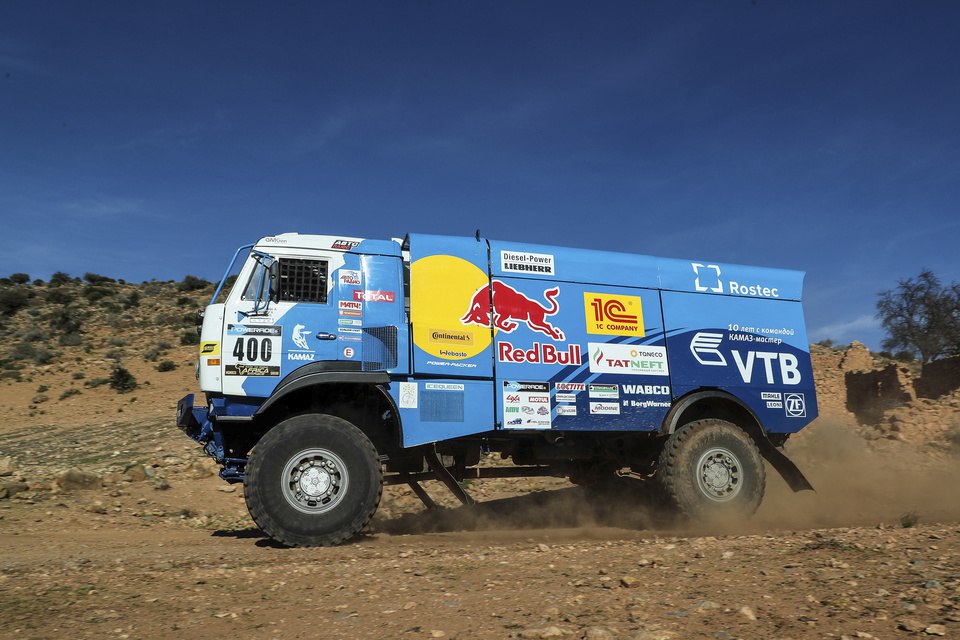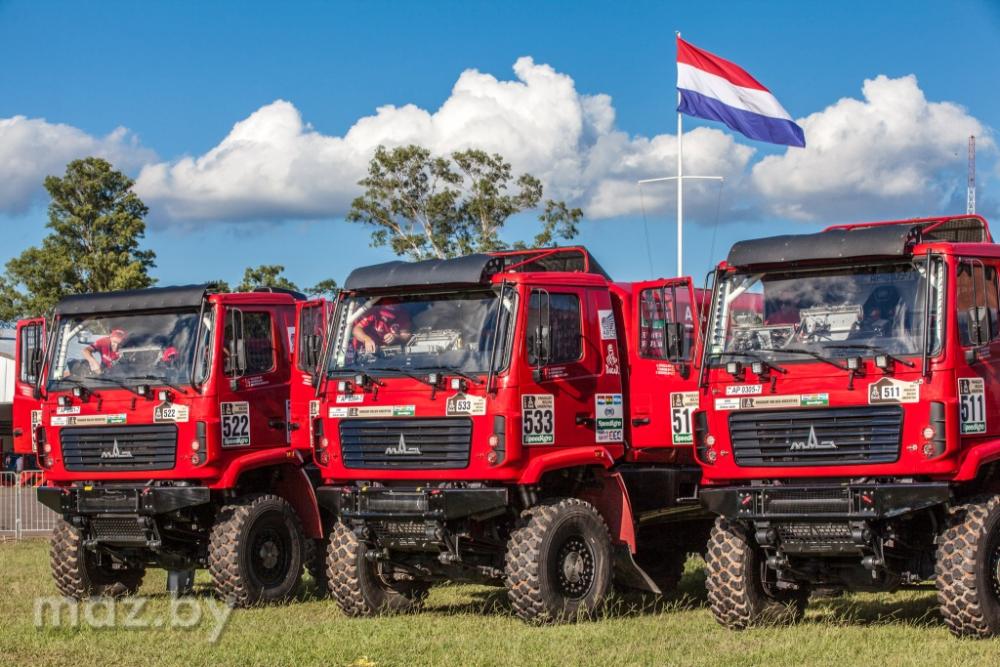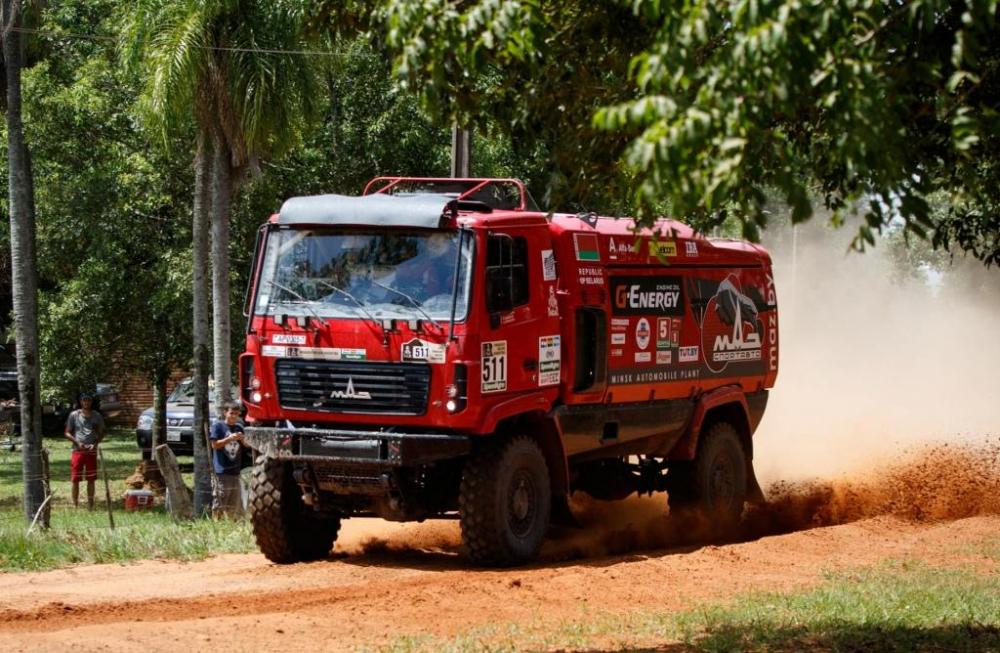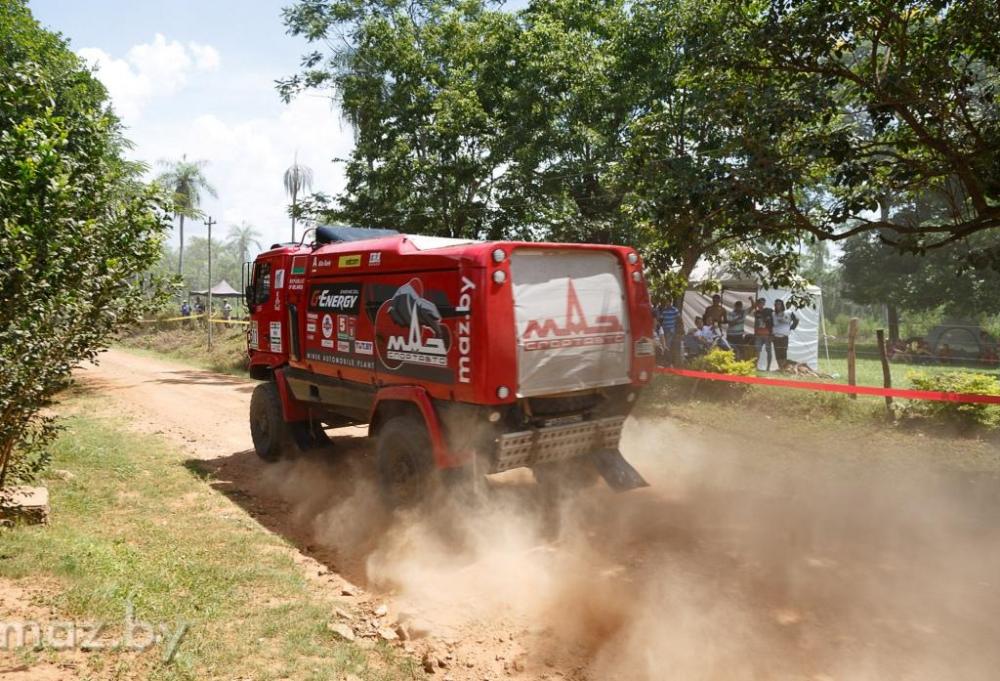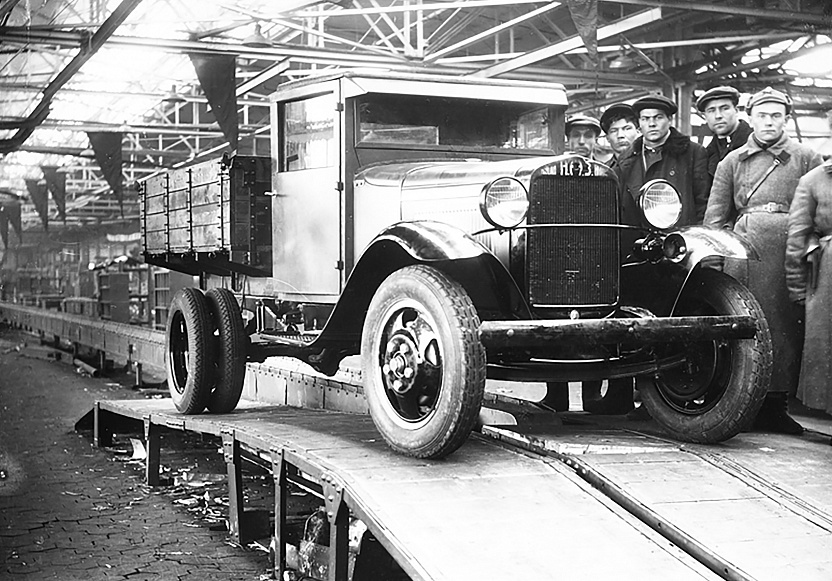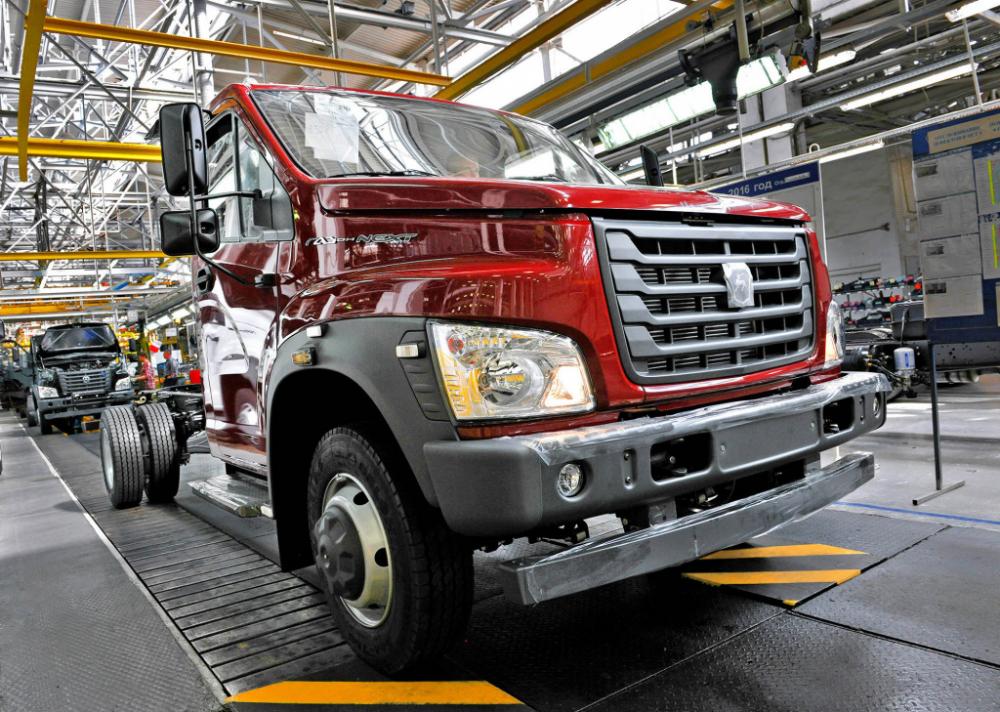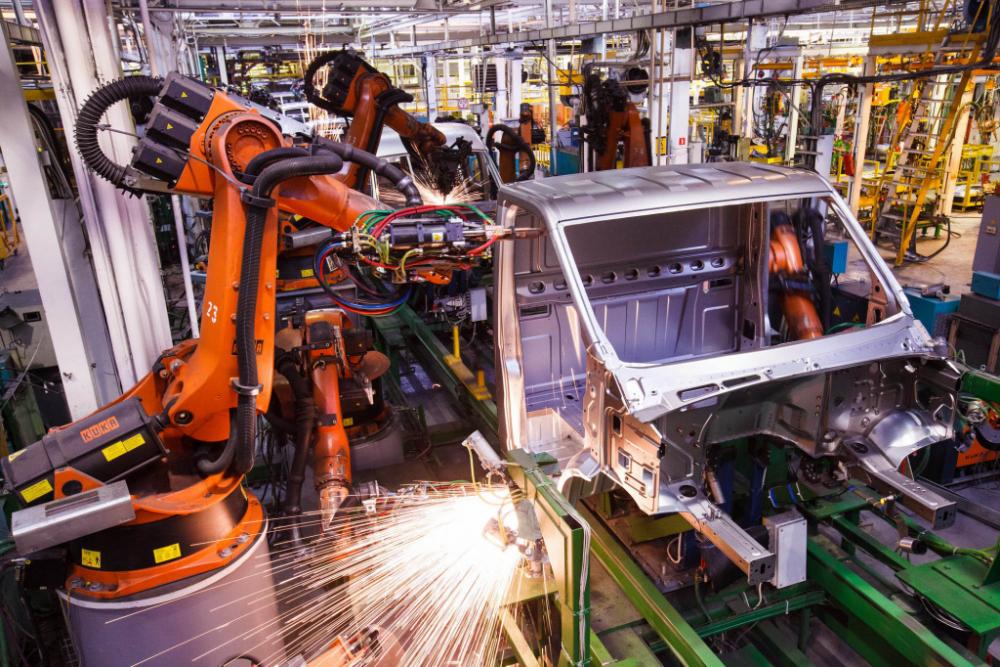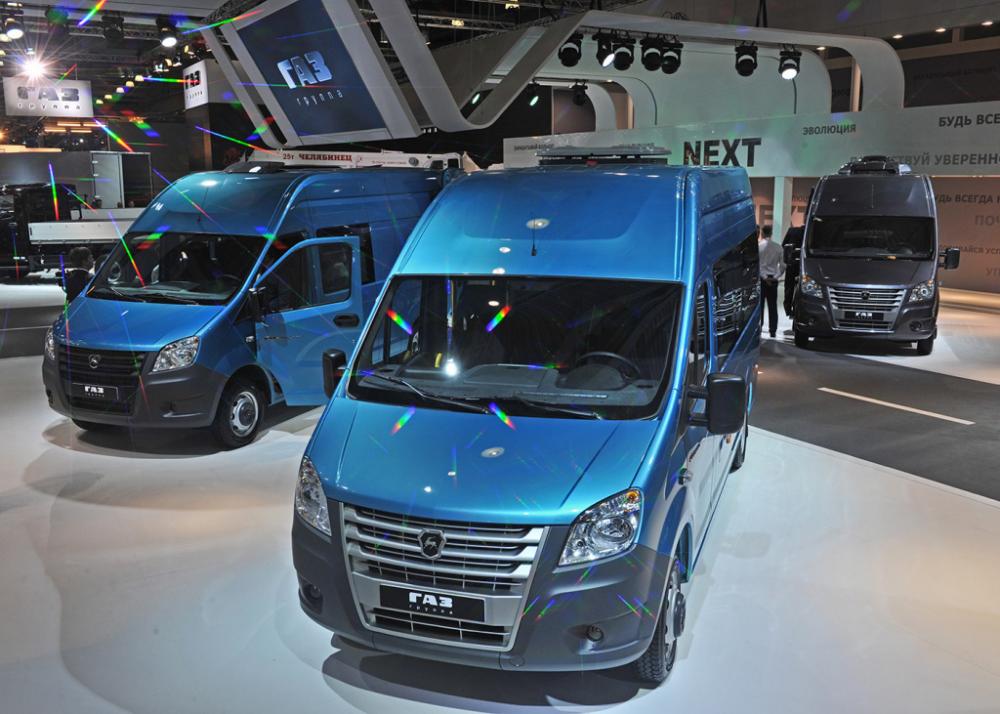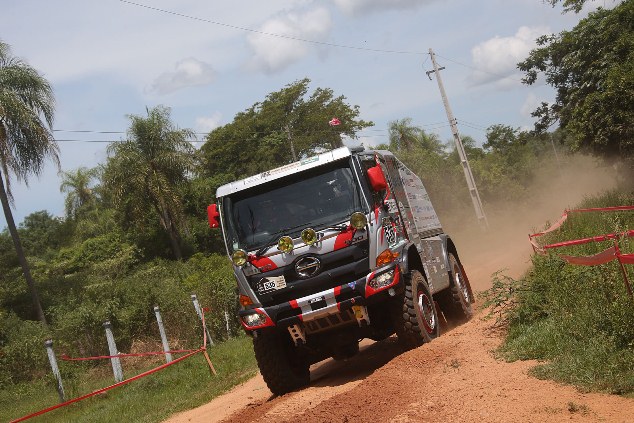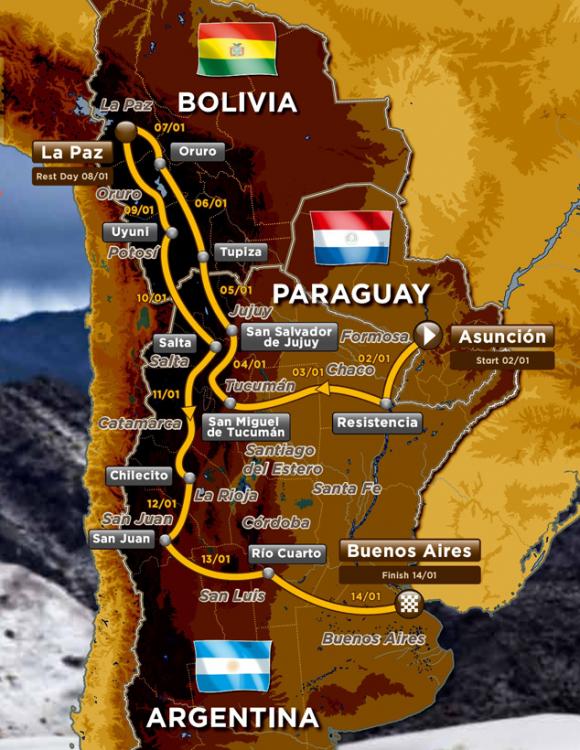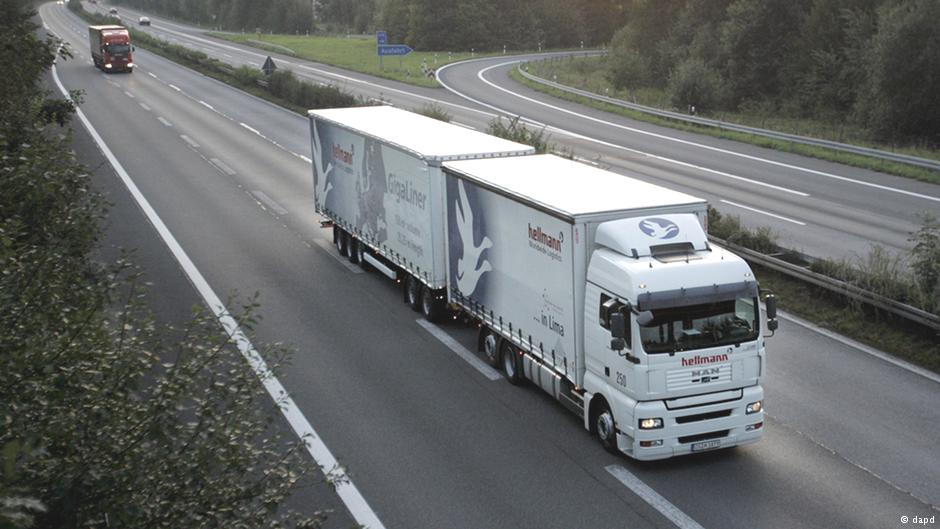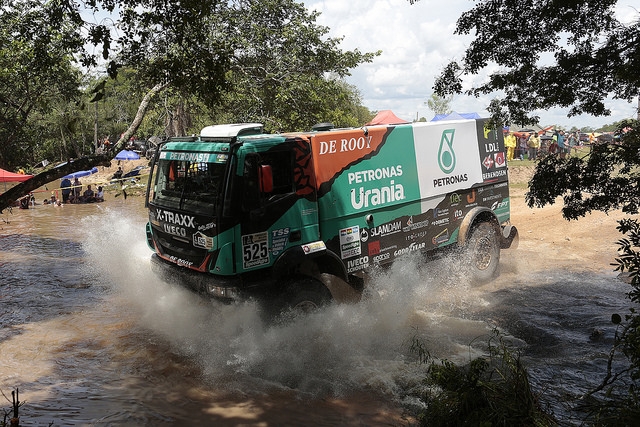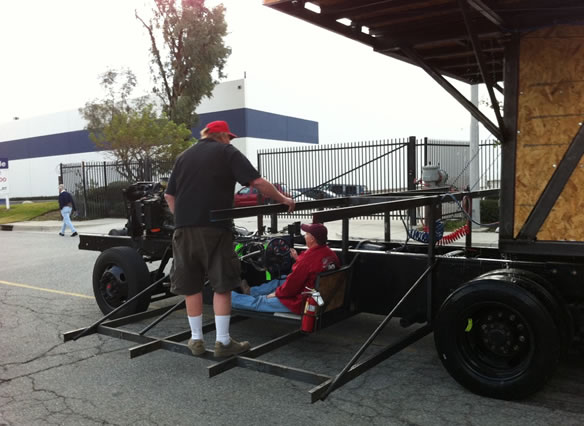
kscarbel2
Moderator-
Posts
17,893 -
Joined
-
Days Won
86
Content Type
Profiles
Forums
Gallery
Events
Blogs
BMT Wiki
Collections
Store
Everything posted by kscarbel2
-
Ford to Cancel Mexican Plant - Invest $700mm in Michigan Plant
kscarbel2 replied to General Ike's topic in Odds and Ends
My friend, you typically bring some very interesting views to the table, However, in the interest of healthy discussions among friends, i.e. your fellow BMT members, and also in the interest of having an atmosphere where people aren't afraid to share their thoughts, which diminishes the growth of the BMT website, may I humbly and respectfully suggest we all refrain from calling others............"idiots". -
Ford Motor Company Press Release / January 4, 2017 Ford, America’s truck leader, is celebrating a major milestone as F-Series now reigns as the top-selling truck in the country for 40 consecutive years and best-selling vehicle for 35 years. Ford has now sold more than 26 million F-Series trucks since January 1977. Think of it like this: That many trucks could circle the globe more than three times, or, lined up bumper-to-bumper, would span 90,000-plus miles. Ford truck leadership was established with the sixth-generation of F-Series for the 1977 model year, a time when 8-track tapes, disco and bell bottoms were the rage. The company was riding a sales wave – based on an all-new F-150 light-duty pickup featuring an improved 351-series V8 engine, standard front disc brakes, and an extended SuperCab offering. Yet continuous innovation is at the very core of F-Series’ success and even with the momentum in 1977, Ford engineers were already at work on a clean-sheet design for an all-new lineup. That seventh-generation F-Series not only set sales records for trucks, but also by 1982 it had become the overall best-selling vehicle in America. “The 1980 model was a breakthrough generation for Ford,” said historian and author James Wagner. “It was all new – probably the greatest change in 40 years. It was fresh and had a strong emotional appeal with the twin I-beam front suspension. It seems from that point on, things really went Ford’s way as far as trucks were concerned.” 1997 marked the beginning of a split for F-Series into two distinct platforms – the 10th-generation F-150 was geared toward light-duty truck customers, while new F-250 and F-350 Super Duty brand trucks debuted in 1999 targeting heavy-duty commercial vehicle buyers. Ford anticipated widening consumer needs, expanded its truck lineup Early on, Ford identified changing consumer preferences among truck customers who were increasingly using their vehicle to do more than haul livestock and equipment; customers were also using their trucks for their family and lifestyle needs. Beginning with the King Ranch in 2001, Ford was now offering luxury edition pickups that provided a combination of capability, style and comfort. Furthermore, models like the Platinum and Limited series went further, featuring leather seating, rich wood trim, full power accessories and premium sound systems. Ford also pioneered performance and specialty truck segments with the special-edition Harley-Davidson F-150 and SVT F-150 Lightning in 1993. By 2002, Ford was marking 25yearsas best-selling truck in America and 20 years as best-selling vehicle overall. “What’s made the F-Series so successful is the Ford truck team’s ability to anticipate the needs of our customers better than anyone else – how those needs change, what’s most important, and what they need to move forward,” said Todd Eckert, Ford truck group marketing manager. “Their insights help us design, engineer and build America’s best-selling trucks.” For the 2004 model year, the 11th-generation F-150 received a top-down redesign. 2009 saw Ford charging ahead with some of the strongest visual cues ever for the 12th-generation F-Series. For the 2011 model year, the company was poised to combat skyrocketing energy costs with introduction of the all-new fuel-efficient 3.5-liter EcoBoost® V6 engine for F-150. Toughest, smartest, most capable F-Series ever On rare occasions, innovative companies forever change the game with the introduction of a revolutionary product. Ford’s all-new high-strength, military-grade aluminum-alloy body for the light-duty F-150 in 2015 was that breakthrough product. Then Ford applied the same lightweight material to make the all-new 2017 F-Series Super Duty even more capable than ever. When paired with advanced powertrains, like Ford EcoBoost V6 engines, the F-150 lineup offers the most hauling capability* and best-in-class gas mileage**. Customers and critics alike appreciate the continued innovation of Ford F-Series trucks, with the 2017 Super Duty winning the Motor Trend Truck of the Year award – the seventh time in 30 years Ford has taken home the honors. F-Series innovations and milestones, 1977 to present 1977: Ford begins F-Series truck leadership, selling 818,580 trucks for the model year 1979: Ford introduces the Built Ford Tough brand promise 1980: All-new seventh-generation F-Series features efficient gas and diesel V8 engines, new angular design, improved interior features; twin-traction-beam four-wheel-drive front suspension introduced 1984: F-150 replaces F-100 as base F-Series truck, adding improved safety features and new center console; optional CD player comes a year later 1987: Eighth-generation F-Series features a more aerodynamic design, available electronic fuel injection, redesigned interior including instrument panel, and rear antilock brakes 1998: Super Duty brand of medium-duty trucks debuts for commercial customers and aligns the popular F-150 line for light-duty customers 2001: Luxury King Ranch is an unprecedented success 2002: Ford, celebrating 25 years as best-selling truck in America and 20 years as best-selling vehicle overall, introduces Ford-engineered, Ford-built 6.7-liter Power Stroke® turbo diesel engine 2008: Ford introduces all-new Class 3-leading F-450 pickup, once again raising the bar for maximum towing capacity 2011: Powerful, efficient EcoBoost engine technology introduced for F-150 2015: Ford shifts production away from steel to high-strength, military-grade, aluminum-alloy body for F-150; introduces all-new technology, including 360-degree camera 2016: New Pro Trailer Backup Assist helps make backing up a trailer as easy as turning a knob; plus F-150 is only full-size pickup to earn a five-star rating from National Highway Traffic Safety Administration and a Top Safety Pick from Insurance Institute for Highway Safety 2017: Ford celebrates F-Series leadership, marking 40 years with the best-selling truck in America and the best-selling vehicle overall for 35 years # # # (*) When properly configured. Class is Full-Size Pickups under 8,500 lbs. GVWR based on Ford segmentation. (**) EPA-estimated rating of 19 city/26 hwy/22 combined mpg. 2.7L EcoBoost, 4x2. Actual mileage will vary. Class is Full-Size Pickups under 8,500 lbs. GVWR based on Ford segmentation. . .
-
KrAZ Trucks / December 19, 2016 Heavy snow and icy roads this winter in different regions of Ukraine demonstrated the need for modern new trucks to overcome the weather challeneges. In Vinnitsa region, a Renault tractor-trailer carrying a 35 metric ton load could not climb hill of road Kodyma-Peschanka near the village Studenaya, Peschanka region (the road connecting Kodyma and Peschanka is in a bad state, this causeway is not maintained by regional road maintenance service). The driver had little choice but to call up to Rescue Service for help. Rescuers of special rescue team of SRES in Vinnitsa region came to the scene. The rescuers used the KrAZ-255B off road vehicles to tow the semi-trailer truck to safe section of road. In Poltava region, SRES workers used a KrAZ truck to render assistance to 8 trucks in the same situation. Near the village of Gorodishche in the Lubny area, on the road Lubny-Chernukhi eight trucks with 12 occupants could not climb hill due to slippery road. Rescuers towed the vehicles on the hill using rope and winch of a KrAZ-255, allowing the drivers to continue on their way. Every year, specially equipped KrAZ trucks help in providing road maintenance services with required multipurpose special vehicles such as road maintenance vehicles with snow clearing, gritting and snow blowing equipment and SRES units with rescue vehicles. .
-
"Dakar 2017": the first stage KamAZ Trucks / January 3, 2017 Victory of "KAMAZ-master" team crew Andrew Karginova the first stage of the 2017 Dakar race, KAMAZ‘s Sergey Kupriyanov at the finish in the standings was the sixth truck. The first stage of "Nador - Domain Mule", the length of 610 km and 86 km special stage. According to Andrei Karginova, despite the fact that the length of the special stage was only 85 kilometers, the track was full of treacherous surprises that could cost precious minutes. "In the beginning, the organizers never give challenging special stages. On the contrary, they allow the trucks “to roll." But the legend for the different competitions write different people: for the "Dakar" in South America - one for the "Silk Road" - the other, for the Dakar race - third, so it remains to get used to right now. Whatever it was, today, you could run into adventures, if the result of the rush, so we were in no hurry and calm "run in", "- said Karginov. Sergei Kupriyanov crew finished sixth, and yet the pilot of the "gas" KAMAZ remains optimistic. "In general, the stage we are satisfied, because after all, reached the finish line, - said Sergey Kupriyanov. "We very quickly overtook two trucks, but somewhere in the 22-kilometer struck the wheel. I had to change. While I - we have surpassed. As a result, in the short special stage to make up a serious backlog failed. But this is only the first stage. Especially interesting will be the race ", - he assured the pilot. Today, Tuesday, crews will go through the second phase of the Domain Mulet to Tagunov. The length of the stage - 393 km, of which 370 falls on the special stage. Andrew Karginov try to preserve and increase the advantage, Sergei Kupriyanov a great opportunity to catch up. After the first night in the Domain Mule, which in this time of year is very cold, the participants of the rally have to quickly adapt to the soft sand and dune passing conquer that awaits them is 1 km from the start. After 75 km the crews will meet on your way dunes of Merzouga, this will be the first real "sand cake" Rally Africa Eco Race 2017. Dune Erg well known to the participants, since all the rallies organized in Morocco, pass through it. Continue the race to the authentic Moroccan "runway": this high-speed track will alternate with gravel and sand. This track will lead crews to the palm grove Tagunov. Then on the way opponents stand just three dunes and the Draa river channel. Athletes will finish in the city Tagunov. The results of the first stage in the general classification T4 A place participants A country Truck Result 1 Andrew Karginov Andrew Mokeev Dmitri Nikitin Russia Kamaz 1:06:17 2 Jaroslav Valtr Czech Republic TATRA 00: 03: 52 3 Elishabet Jacinto Jose Marques Mark Kokin Portugal MAN 00: 08: 33 4 Tomas Tomeček Ladislav Lala Czech Republic TATRA 00: 09: 02 5 Miklos Kovacs Peter Chegledi He Tamas Hungary Scania 00: 09: 09 6 Sergei Kupriyanov, Alexander Kupriyanov Anatoly Tanin Russia Kamaz 00: 15: 50 .
-
Stage 1 Results MAZ Trucks Press Release / January 3, 2017 Crew no. 511 under Siarhei Viazovich piloting is on the 12th position. In the very beginning of the special area, the windshield was damaged. As a result, visibility was almost zero. The crew had to push out the windshield and continue the race without it. Nevertheless, they finished with a good result. The time lag was only 1 minute 33 seconds . 522 crew under Alexander Vasilevski piloting is at the 21st position with a time lag in 4 minutes 12 seconds. Alexey Vishneuski crew no.533 took 23 position with a time lag in 5 minutes 22 seconds. The first place at this stage was taken by M.Kolomy (Tatra). The route of the second stage from Resistencia to Tukuman will be along quite bad roads. Heavy rains have left deep puddles and mud. There also will be quite narrow areas. If there is no changes in weather, the special will be quite speedy. But the organizers warn competitors about fesh-fesh. It is also necessary to take in consideration a 40 Celsius degrees heat that is being forecasted for this day. The starting time of our crews at the second stage: 511 (S.Viazovich/P. Haranin/A.Zhyhulin) - 14:35:00 (local time GMT-3) 522 (A.Vasilevski/D.Vikhrenka/A. Zaparoshchanka) - 14:43:30 (local time GMT-3) 533 (А.Vishneuski/М. Novikau/А.Neviarovich) - 14:44:30 (local time GMT-3). The distance of the second stage is more than 800 km including about 280 km special in the region of Chaco. .
-
GAZ Group Press Release / December 29, 2016 January 1, 2017 marks the 85th anniversary of the GAZ Group’s historic Gorky vehicle plant. The factory, constructed in just 18 months, is associated with the large-scale transition of the country to automotive transport. On January 29, 1932, the first Ford AA-based one-and-half metric ton GAZ AA truck rolled off the assembly line. Since then, the Gorky automobile plant has been a key supplier of light and medium trucks. Over 985,000 GAZ AAs were built in USSR from 1932 to 1950. The GAZ version had a cargo capacity of 1,500 kg (3,300 lb). A model with stronger 50 HP engine and wartime simplifications is often named GAZ–MM, after the engine. Since its founding, GAZ has produced over 18 million cars and trucks. Today, GAZ Group’s Gorky plant today utilizes the latest technologies of the global automotive industry to develop and manufacture motor vehicles. The plant produces a wide range of light and medium-duty commercial trucks. .
-
Team finishes the short stage on day-1 without incident. Asuncion (Paraguay) - Resistencia (Argentina) Liaison: 70km, SS: 39km, Liaison: 345km Total: 454km On Jan. 2, contestants of Dakar Rally 2017 raced a 39km timed segment on their way from Asuncion, Paraguay to Resistencia, Argentina. The SS was set on flat gravel terrain to the east of Asuncion. This was the first SS to be set in Paraguay, and while it was short, teams had to be on their toes as they faced winding forest roads, extensive dust, and river crossings. HINO TEAM SUGAWARA crews piloting their HINO500 Series trucks in this SS maintained their cool to the finish line. Car 2 crewed by Teruhito Sugawara and Hiroyuki Sugiura finished 19th overall and first in the Under 10-litre Class. The Car 1 crew, Yoshimasa Sugawara and Mitsugu Takahashi, finished 40th overall and 3rd in the Class. After the SS, contestants crossed the border into Argentina on a liaison segment, and headed for their first bivouac at Resistencia. The bivouac was set up on a local racing circuit where Car 2 arrived at around 7:30pm, and Car 1 at around 8:00pm. The mechanics who had been on stand-by wasted no time to inspect the trucks. No problems were found with the trucks, and the mechanics just had some minor servicing to do including fine adjustments to Car 1's suspensions. On Jan. 3, contestants will be traveling westward within the borders of Argentina and race a 275km SS on their way from Resistencia to San Miguel de Tucuman. Yoshimasa Sugawara: I couldn't wait to start. There was a river crossing along the way, probably due to the rain, and we saw a truck that was stuck there. We will be facing a longer SS tomorrow so we will stay alert. Mitsugu Takahashi: I wasn't going to cut myself any slack for making mistakes like I did last year, my first time in this rally, so I'm approaching this with renewed focus and concentration. The course today was on a one track road, but there were a lot of pot holes and we saw many cautionary instructions. Teruhito Sugawara: We've been making great advances on our truck, and I'm happy that this rally that we've been looking so much forward to have finally started. We finished three minutes behind the top finisher on the 39km SS today, so that was a pretty solid performance. We might even be able to shorten this time difference in the longer stages that are upcoming. Hiroyuki Sugiura: Perhaps due to the fact that the truck is faster, it was hectic reading out the instruction sheet to the point that I fell behind a couple of times. I was also pleasantly surprised at the truck's improved riding comfort. ※These standings are all preliminary at the time of this writing as organizers had not yet set up their clocking HQ at the bivouac in Resistencia. No definite standing figures are available for the Under 10-litre Class either as these have not been shown on the results chart. .
-
Deutsche Welle / January 3, 2017 Germany's transport minister has riled government colleagues by greenlighting "mega-trucks" for regular use. The Environment Ministry says it was not consulted and that the trucks will be a disaster. Alexander Dobrindt believes Germany's highways are ready for longer trucks - what Germans have dubbed "gigaliners" - and may be driven on highways as of now. In a statement released in December, the conservative Transport Minister announced that the results of a five-year test phase were in, and that the "long-truck" was "practical." "It is safe, saves fuel and will lead neither to the shifting of traffic to the road, nor to a heavier burden on our infrastructure," Dobrindt said in a statement. "Two long-trucks replace three conventional trucks. And fewer vehicles mean fewer emissions." But others in the German government begged to differ, and, unusually for inter-ministry rows, were prepared to go public with their rancor. "The effects of the long-truck, its environmental impact, as well as effects on rail transport have not yet been sufficiently examined," Jochen Flasbarth, state secretary at the Environment Ministry, told the DPA news agency. "The Transport Ministry is creating precedents that aren't compatible with EU law." Longer, but more efficient Dobrindt's decision means that trucks of 25.25 meters (82.84 feet) - 6.5 meters longer than conventional trucks - can travel on Germany's major road network with immediate effect. Regulations have been lifted for three of the five types of gigaliner, while the test phases for the other two have been extended. The Federal Highway Research Institute (BASt), which ran the tests, came to the conclusion that allowing mega-trucks would mean up to 25-percent fuel savings, and yet would not encourage logistics companies to favor road over rail. "Of course the CO2 emissions would go down if you only needed three trips instead of two," said Jens Hilgenberg, transport specialist at the environmental campaign group BUND. "But because of the cost advantage that this creates, then a lot of goods will be shifted from the rail back onto the roads." Hilgenberg also said long-trucks were bound to cause infrastructure headaches. "You'd certainly need to extend one or two highway on-ramps," he told DW. "Also no one seems to have considered that highways are sometimes closed. And knowing the logistics industry, they're not going to wait - of course they're going to go off and drive through villages, even if they're not allowed to. It will be unavoidable." The Pro-Rail Alliance, a collection of NGOs and companies aimed at promoting railway transport, rejected the ministry's plan outright, claiming that the introduction of long-trucks would lead to "7,000 more truck trips per day" across the country. The Pro-Rail Alliance argued that the example of Sweden, where long-trucks are already allowed, showed that railway companies would suffer, and the organization has now threatened to take legal action against Dobrindt for his "unilateral" decision. 'Nonsense' In an emailed statement to DW, the Transport Ministry responded to Flasbarth's accusations by underlining that there had been five years of tests, which had been "scientifically documented and transparently published," and that the Environment Ministry had been "included" in the decision to allow them onto the roads. "The Environment Ministry basically agreed with the special directive," said the ministry, before adding that the only objection it had voiced was over the length of time that one specific type of gigaliner could be licensed. Kirsten Lühmann, transport policy spokeswoman for the center-left Social Democratic Party (SPD), described the objections to gigaliners listed by BUND and the Pro-Rail Alliance as "nonsense." Not only was she convinced that they would reduce overall CO2 emissions, all the BASt field tests showed that they would not put railway operators out of business. "They are totally different cargos," she told DW. "You need a long-truck when you want to transport large-volume, lightweight goods in small quantities - for example washing machines. The railway companies say: 'Listen, we can only transport goods economically if we can fill a whole train - 50 cars stuffed full of washing machines.' These then have to be transported to distribution centers, where they would still have to be loaded onto trucks. And the businesses say: that's just not worth it." But Lühmann acknowledged that the Transport Ministry had not been fully open about the problems that long-trucks did cause in the tests. The BASt report "clearly showed there were problems on traffic circles and merging," she said. "If you want to merge a 25.25-meter vehicle into a road, you need a gap in both directions - now imagine it's a main road and it's rush hour in the morning. You'll be standing there 10 minutes, 15 minutes, and everyone will be backing up behind you as well." She added that there were also infrastructure problems still to settle - especially with traffic circles and the lack of rest stops with large enough parking spaces. But fundamentally she was satisfied that long-trucks were ready to roll on Germany's roads. .
-
Ford to Cancel Mexican Plant - Invest $700mm in Michigan Plant
kscarbel2 replied to General Ike's topic in Odds and Ends
How Ford finally turned the Trump tide on GM Nick Bunkley, Automotive News / January 3, 2017 For a year and a half now, Donald Trump has made Ford Motor Co. his automotive punching bag, while General Motors, following the conventional advice for encountering a grizzly bear, tried not to make any sudden movements that might attract his attention. Both companies have been investing heavily in Mexico, but Trump kept singling out Ford in his attacks, which consisted more of rhetoric to incite the crowds at his rallies than actual facts. In one day, Ford managed to flip the narrative. Suddenly, Ford has become the American automaker investing in America, while GM is printing up layoff notices that will go out to 2,000 workers in Michigan and Ohio just as Trump is taking office. Ford, after insisting throughout the presidential campaign that its plans for Mexico were set in stone, has now handed Trump two gift-wrapped victories since the election. First was the reversal of plans to move Lincoln MKC production out of Kentucky. Now it canceled an entire $1.6 billion plant, choosing to spend less than half that amount in Michigan instead. And hours before announcing that stunning turn of events, Ford scored a victory for itself when Trump tweeted an attack on its archrival. Trump told his millions of followers that GM was importing Mexican-made Chevrolet Cruzes and threatened a “big border tax” if it didn’t start making them in the U.S. instead. The timing was clearly no coincidence. Trump aide Kellyanne Conway, appearing on CNBC this morning, said the tweet related to “secret information” that Trump had received. And the fact that Trump picked on the Cruze was curious. If he simply wanted to attack GM for importing vehicles from Mexico, why not point out that Chevy sold about 80,000 of its Mexican-made Trax crossovers in the U.S. last year? In contrast, only about 4,500 of the Cruzes sold last year in the U.S. were built in Mexico. GM started importing the Cruze hatchback about five months ago, because demand for it isn’t strong enough to justify installing the tooling for it in Lordstown, Ohio, where the Cruze sedan is produced. The Mexican-built hatches are sold in a number of countries, including the U.S. Through November, GM had made 319,536 Cruze sedans in Ohio last year. All of the Cruze sedans sold in the U.S. since the nameplate’s 2010 debut have been made in Ohio. But the Cruze was ripe for an attack because inventories of them have swelled to the point that GM is cutting the third shift in Lordstown on Jan. 23 -- three days after Trump’s inauguration. It’s easy to make the case that GM is up to something nefarious when it’s cutting American jobs at the same time as imports of the car those workers build are increasing. The truth is that GM can’t just move hatchback production to Ohio at the drop of a hat. With volumes of fewer than 1,000 a month so far, it would make more sense to just stop offering the car than to spend the extra money to build it in Lordstown. And the fact is, Ford still plans to move production of its Cruze competitor, the Focus, to Mexico in 2018. That hasn’t changed. It’s just going to make the car in an existing plant, alongside the Fusion and Lincoln MKZ, rather than build a new plant for that purpose. Ford even says it will save money by canceling the San Luis Potosi plant, which was scheduled to open next year. It’s a win for the company as well as for Trump, who gets to claim credit for creating jobs even before he becomes president. The investment that Ford is making in Michigan, adding 700 jobs here instead of 2,800 in Mexico, is certainly significant. UAW Vice President Jimmy Settles said he cried when told of the gains for his membership. But the biggest result of Ford’s flip flop is a greater potential for Trump to bully other automakers into similar moves. -
Trump and Immigration (Illegal Immigrants in the US)
kscarbel2 replied to kscarbel2's topic in Odds and Ends
Reuters / January 3, 2017 In a wide-ranging request for documents and analysis, President-elect Donald Trump's transition team asked the Department of Homeland Security last month to assess all assets available for border wall and barrier construction. The team also asked about the department's capacity for expanding immigrant detention and about an aerial surveillance program that was scaled back by the Obama administration but remains popular with immigration hardliners. And, the team asked whether federal workers have altered biographic information kept by the department about immigrants out of concern for their civil liberties. The requests were made in a Dec. 5 meeting between Trump's transition team and Department of Homeland Security officials. In response to the transition team request, U.S. Customs and Border Protection staffers identified more than 400 miles along the U.S.-Mexico border, and about the same distance along the U.S.-Canada border, where new fencing could be erected. It’s unknown whether the Trump team is considering a northern border barrier. During the campaign, Trump pledged to build a wall and expand fencing on parts of the U.S.-Mexico border but said he sees no need to build a wall on the border with Canada. One program the transition team asked about was Operation Phalanx, an aerial surveillance program that authorizes 1,200 Army National Guard airmen to monitor the southern border for drug trafficking and illegal migration. The program once deployed 6,000 airmen under President George W. Bush. The transition team also asked for copies of every executive order and directive sent to immigration agents since Obama took office in 2009. Trump has said he intends to undo Obama's executive actions on immigration, including a 2012 order to allow children brought to the U.S. illegally by their parents to remain in the country on temporary authorizations that allow them to attend college and work. The program, known as DACA, collected information including participants' addresses that could theoretically be used to locate and deport them if the policy is reversed. Another request of the transition team was for information about whether any migrant records have been changed for any reason, including for civil rights or civil liberties concerns. A Department of Homeland Security official, speaking on condition of anonymity [why?], said the agency interpreted the request to mean the transition team wanted to make sure that federal workers were not tampering with information to protect DACA recipients and other migrants from deportation. The internal memo summarizing the meeting between Trump's transition team and U.S. Customs and Border protection said the team had requested a comprehensive picture of border security as well as resources available for walls and barriers. The Department of Homeland Security official said agency representatives who attended the meeting believed the request to include both the northern and southern borders. U.S. Customs and Border Protection then prepared a report on specific locations and costs of building a fence along the U.S.-Canada border. Reuters reviewed a copy of the report, which estimated the cost of building fencing along the northern border fence would be $3.3 billion and cover 452 miles along border of Canada and the states of Washington, Idaho, Montana, New York, Vermont, New Hampshire and Maine. Adding 413 miles of fencing on the southwest border would be more expensive, according to the estimate of $11.37 billion, because it would be aimed at keeping pedestrians as well as vehicles from crossing. Pedestrian fences require more staff and would cost $11.2 million per mile versus $4.1 million per mile to build to build, according to the report. In fiscal year 2015, the latest year for which data is available, border patrol agents apprehended 2,626 illegal migrants on the U.S.-Canada border compared to 331,333 apprehended on the U.S.-Mexico border. -
IVECO on the podium of the first stage of the famous Rally Iveco Trucks Press Release / January 3, 2017 The 39th edition of Dakar Rally is underway. The participants started early in the morning in Asunción, Paraguay, and headed to Resistencia, in Argentina. Although just 39 kilometres long, this first stage was a particularly tough timed drive on Paraguayan soil. Ton van Genugten was IVECO's man of the day, finishing the stage just 13 seconds behind the leader, Martin Kolomy with Tatra. The Dutchman, behind the wheel of the IVECO Trakker #507, benefited from the leaders opening the roads ahead of him, and he managed to maintain the pace that led him to the second best time of the day. Gerard de Rooy did exactly what he had said he would, and didn't push his truck 100% on the first day, as the stage was short, the risks very high and the chances of gaining a big advantage were small. "We deflated the tyres because we had a problem in a system, but this was after the special, during the liasion. We didn't lose race time. In the stage we did a great job. We weren't the fastest, but we focused on not losing time," remarked Gerard de Rooy. Gerard de Rooy, Dakar winner in 2012 and 2016, closed the special in the 5th place, 42 seconds behind the leader, placing a second IVECO truck in the Top 5. Wuf van Ginkel had a hard time of the stage between Asunción-Resistencia with the IVECO Trakker #525. The Dutchman lost too much time on the road and finished 20 minutes behind the leader, falling back past the 40th position. This will leave him starting at the back of the field tomorrow and he will not be able to provide quick assistance to his Iveco teammates should they need it. Federico Villagra, with the other IVECO Powerstar, didn't take risks in this first stage and achieved a 9th place, with his sights set on climbing the classification in the coming days. The Argentine driver finished 1m26s behind de leader, placing a third IVECO truck in the top 10 of the day. On Tuesday, the competitors will drive from Resistencia to San Miguel de Tucumán, in the north of Argentina. It will be a long day, with 812 kilometres for Trucks, with 275 of them timed for the special stage. Stage 1 Results – Dakar 2017 1. Martin Kolomy (Tatra) 30m00s 2. Ton van Genugten (IVECO) +13s 3. Martin van den Brink (Renault) +25s 4. Ales Loprais (Tatra) +31s 5. Gerard de Rooy (IVECO) +42s ----------- 9. Federico Villagra (IVECO) +1m26s 42. Wuf van Ginkel (IVECO) +20m02s Follow all the news at www.iveco.com/dakar IVECO will keep its fans up to date throughout the rally on www.iveco.com/dakar, following the race step by step with daily updates from South America. The website narrates a journey through the world's most difficult and demanding off-road race. The website, published in English and Spanish, will be updated every day with Team PETRONAS De Rooy IVECO's results and performance data, plus multimedia content transmitted directly from the course itself. Likewise, the IVECO's social media channels will be updated every day, with all the latest news as well as reports, videos and photos. .
-
Cummins Inc. Press Release / December 14, 2016 For the twelfth straight year, Cummins Inc. has been awarded a perfect score in the 2017 Corporate Equality Index (CEI), a national benchmarking survey and report on corporate policies and practices related to LGBT workplace equality, administered by the Human Rights Campaign (HRC) Foundation. The ratings were announced Dec. 5 by HRC, the largest U.S. civil rights organization for lesbian, gay, bisexual and transgender employees, which has more than 1.5 million members and supporters. “At Cummins, we have a long legacy of embracing the opportunities created by a diverse organization,” said Chairman and CEO Tom Linebarger. “Diversity and inclusion throughout our company allows us to attract and retain the best talent and fuels a more innovative work environment allowing Cummins to be a strong and successful company.” he HRC’s Corporate Equality Index (CEI), introduced in 2002, provides an in-depth analysis and rating of large U.S. employers and their policies and practices related to LGBT employees. Businesses are rated based on their responses to the CEI survey. The 2017 CEI rated 1,043 businesses in the report, which evaluates LGBT-related policies and practices including non-discrimination workplace protections, domestic partner benefits, transgender-inclusive health care benefits, competency programs, and public engagement with the LGBT community. Cummins efforts in satisfying all of the CEI’s criteria results in a 100 percent ranking and the designation as a Best Place to Work for LGBT Equality. .
-
Renault Trucks Press Release / December 21, 2016 Renault Trucks is furthering its corporation with the Iranian importer Arya Diesel Motors. On 21 December 2016, the parties signed two agreements in Lyon: an import agreement covering vehicules from the T, C and K ranges and an industrial cooperation agreement for the assembly of T range vehicles. On 21 December 2016 in Lyon, Bruno Blin, President of Renault Trucks and Hirbod Jenabzadeh, Board member of Arya Diesel Motors met to sign the two agreements. The first covers the import, distribution and after-sales service of the T, C and K ranges. By signing this agreement, the two parties are furthering the working partnership started in 2006. The second is an industrial cooporation agreement. The manufacturing site of Arya Diesel Motors, located 90 km south-west of Teheran, will therefore start by assembling Renault Trucks T, with industrial operations set to commence in Q3 of 2017. Prior to the 2012 embargo, this unit, which was built in 2009, assembled Renault Premium and Kerax. "Iran is an important, historic market for Renault Trucks. We are now returning to the country with strong, reliable vehicles and a high-quality partner, Arya Diesel Motors. Our ambition is to eventually achieve a 15 % market share", explained Bruno Blin, President of Renault Trucks. Arya Diesel Motors was created in 2006 to represent Renault Trucks in Iran. Arya Diesel Motors started by distributing completed vehicles before investing in a manufacturing site, located 90 km south-west of Teheran, dedicated to the assembly (SKD Semi-Knocked-Down) of Renault Kerax and Premium. The Arya Diesel Motors network has 30 sales outlets, 18 service outlets and an airplane that provides technical assistance throughout Iran. Picture: From left to right, Christophe Martin (SVP Renault Trucks International), Hirbod Jenabzadeh (Board member Arya Diesel Motors), Bruno Blin (president Renault Trucks) .
-
Bob, they assemble 155 and 195 models (known as the 300 Series in the global market), and unique to the North American market conventional cab mediums (also assembled at the Williamstown, West Virginia plant). They are assembling KD kits. Perhaps the 155/195 are SKD kits and the conventionals are CKD. http://www.hinocanada.com/WDSKmilestone_en.html
-
Freightliner Trucks Press Release / January 3, 2017 . . . . . . .
-
Hino Motors Press Release / December 23, 2016 This video is a musical tribute for the employees at their Woodstock, Ontario assembly plant, and a celebration of their commitment and dedication to producing high-quality, defect free trucks for our customers. .
-
Ford to Cancel Mexican Plant - Invest $700mm in Michigan Plant
kscarbel2 replied to General Ike's topic in Odds and Ends
Trump threatens 'big border tax' on GM over Chevy Cruze production Automotive News / January 3, 2017 President-elect Donald Trump today blasted General Motors and threatened to impose a "big border tax" for making its Chevy Cruze model in Mexico. However, the automaker reiterated that Cruzes built there will mostly go to the domestic market and that it will continue to build the compact in the U.S. "General Motors is sending Mexican made model of Chevy Cruze to U.S. car dealers-tax free across border. Make in U.S.A. or pay big border tax!" Trump said in a post this morning on Twitter. GM responded in a statement: "General Motors manufacturers the Chevrolet Cruze sedan in Lordstown, Ohio. All Chevrolet Cruze sedans sold in the U.S. are built in GM's assembly plant in Lordstown, Ohio. GM builds the Chevrolet Cruze hatchback for global markets in Mexico, with a small number sold in the U.S." In March, the automaker said it would invest $350 million to produce the next-generation Cruze at its plant in Coahuila, as part of $5 billion investment in its Mexican plants announced in 2014. At the time, GM said it will continue manufacturing the Cruze in Lordstown. However, with demand for the Cruze sedan waning, GM announced in November that the Lordstown, Ohio, plant will lose its third shift on Jan. 23. The cutback affects 1,202 hourly and 43 salaried jobs. Through the first 11 months of 2016, Cruze sales were down 18 percent. Mexico Cruze production began last year; 52,631 models were built vs. 319, 536 in the U.S. Prior to GM's March announcement, the Cruze had been imported to Mexico from the company's plant in South Korea. -
Ford to Cancel Mexican Plant - Invest $700mm in Michigan Plant
kscarbel2 replied to General Ike's topic in Odds and Ends
In effect, nothing has changed. Ford is still going to shift production of the Focus and C-Max from Wayne, Michigan to Mexico. It will now be built in an existing plant at Hermosillo rather than a new $1.6bn plant in San Luis Potosi. No Trump success story here. High volume light vehicles for the world’s second largest market should all be built in the United States, to the benefit of “our” country’s economy. Trump has threatened to slap Ford with a 35 percent tariff on any vehicles it imports from Mexico. Now Ford is still going to produce the cars in Mexico, as planned, to the benefit of Mexico’s economy, and you can safely bet that Ford will never be forced to pay a 35 percent tariff to import the cars into the United States. Rather than build the new Mexican plant, Ford said it would now invest some of that $1.6bn sum in Flat Rock, creating 700 jobs building a range of electric cars. In fact, the Flat Rock investment was already planned several years ago. Wayne is still expected to produce the global Ford Ranger and an SUV based on the Ford Everest, allegedly safeguarding 3,500 US jobs. ------------------------------------------------------------------------------------------------ Ford, following Trump criticism, cancels plans for $1.6 billion Mexico plant Automotive News / January 3, 2017 Ford Motor Co., following months of withering criticism from President-elect Donald Trump for expanding operations in Mexico, said today it will cancel its $1.6 billion assembly plant in the early stages of construction in Mexico, instead investing $700 million in Michigan to bring to market autonomous and electrified vehicles. Ford planned to build its Focus sedan in the new plant following 2018, but will instead build it at an existing Mexico plant in Hermosillo. The $700 million investment will help transform Ford’s Flat Rock Assembly Plant, which currently builds the Mustang and Lincoln Continental, into a high-tech hub capable of building a yet-to-be-determined autonomous hybrid and fully electric SUV with a 300-mile electric range. Those new vehicles are among seven new electrified vehicles Ford detailed today, including hybrid versions of its F-150 and Mustang. (Ford is two years behind its competitors in hydrid and electric vehicle design) The reversal, which came less than a year after Ford announced construction of the new plant, was hailed by lawmakers Tuesday, while Mexican officials expressed disappointment and vowed to make Ford pay back any money spent on the now-canceled plant site. Ford CEO Mark Fields called the decision a “vote of confidence” in Trump and his pro-growth policies, although he told CNBC “the main reason for not building and canceling the plant is just due to market demand.” “We’ve made this decision independently on what’s right for Ford, but we look at all the factors,” Fields told reporters at the announcement. “Our view, we see a more positive U.S. manufacturing business environment under President-elect Trump and the pro-growth policies and proposals he’s talking about.” Ford in December 2015 announced plans to invest $4.5 billion in electric car research and add 13 electrified vehicles to its lineup by 2020. Today it announced details about seven of the 13. The new fully electric small SUV will be coming by 2020 and will be built south of Detroit in Flat Rock, Michigan. It, alongside a high-volume autonomous hybrid and the hybrid version of the Mustang, will be built in Flat Rock. A Transit Custom plug-in hybrid, available in 2019, will be built in Europe; and two new pursuit-rated hybrid police vehicles will be built in Chicago. To support this, Ford plans to invest $700 million and add 700 direct new jobs in Flat Rock over the next four years. Part of that money will go to create a new Manufacturing Innovation Center in Flat Rock. Fields said the plant will become “one of the world’s most flexible and high-tech manufacturing centers." Michigan Gov. Rick Snyder, in a statement, cited the state’s push to become a national leader in mobility. He thanked Ford for its “continued confidence in our state and our people.” UAW-Ford Vice President Jimmy Settles called the investment “the equivalent of a new assembly plant.” Settles said that an unspecified number of UAW workers will move from temporary status to full-time. He expects Ford to add a third shift to Flat Rock. "It’s very significant," Settles said. "I’ve seen a lot, many peaks and valleys. This is at the top, because I know what it will mean for people at this plant and also in America." Settles said Ford chose to make its investments in Flat Rock for a combination of reasons. “It’s had very successful launches of the Mustang and Continental, and they have acreage here and they’re not at full capacity,” he said. Hiring for the 700 new jobs will begin in 2018, Fields said. Fields said Ford was “encouraged” by “pro-growth policies” Trump and the new Republican Congress are likely to pursue, citing them as one of several factors in the company’s decision to invest in the U.S. and cancel the Mexico plant. “We believe that these tax and regulatory reforms are critically important to boost U.S. competitiveness and of course drive a resurgence in American manufacturing and high-tech innovation,” Fields said. Fields cited changing market demands and slower sales of small cars as the decision to keep the Focus in Mexico. Trump has threatened to slap Ford with a 35 percent tariff on any vehicles it imports from Mexico, as well as renegotiate or pull out of the North America Free Trade Agreement (NAFTA). “Obviously, there was some disappointment [in Mexico],” Fields said. “But we’ve been in Mexico over 90 years, and we’re moving our Focus down to Hermosillo, so we’ll be safeguarding the 2,900 [Mexican] jobs that are there, plus we’ll probably add about 200 jobs when we add Focus there.” Mexico’s Economy Ministry said it regretted Ford’s decision to pull its investment from San Luis Potosi. The federal government has guaranteed that the automaker will reimburse the state government for its expenses on the project, the ministry said in a statement. It made no mention of Trump. “The growth of Ford Motor Company in North America, and particularly in Mexico, has been the result of a strategy of competitiveness based on global value chains in which North America competes with other regions of the world,” the ministry said. “The jobs generated in Mexico have contributed to maintaining manufacturing jobs in the United States [BS] that otherwise would have disappeared due to Asian competition.” The now-canceled plant was supposed to employ about 2,800 workers, Ford said when it announced the news. Fields said ground-clearing at the site began around May, but a spokeswoman said no actual construction had taken place. “Where we’re at in the construction of the plant, any assets -- and there aren’t many -- can be redeployed throughout the Ford system,” Fields said. It’s unclear how much Ford is investing in Hermosillo to add the 200 workers to build the Focus. -
Ford rebrands its U.S. commercial truck dealers
kscarbel2 replied to kscarbel2's topic in Trucking News
http://www.bigmacktrucks.com/topic/48150-titan-to-be-discontinued/?page=4#comment-356922 -
Published on December 15th, Contran (Conselho Nacional de Trânsito / National Traffic Council) Resolution 640 now authorizes the use of A-double combinations up to 91 metric tons (200,621 lb). The resolution was born from requests from the sugarcane and grain sectors. The previous rule limited A-double combinations 74 metric tons (163,142 lb). The A-double combinations will utilize two three-axle semi-trailers and a two-axle dolly. Maximum allowed overall length is to be 30 meters (98.4 feet). .
-
Ford Trucks Press Release / December 30, 2016 How do you move the world’s longest and heaviest parade float and deliver the reliability needed for one of America’s storied parades? With a highly proven truck engine known for its hauling and towing capability – Ford’s legendary 6.8-liter V10 gasoline engine. Measuring more than 125 feet long and weighing more than 137,000 pounds, the Lucy Pet Products 2017 Rose Parade float is the longest and heaviest in parade history. It features eight dogs surfing on waves generated by a one-of-a-kind mobile wave machine in a 5,000-gallon water tank. Underneath its flower-coated exterior, this record-breaking float is powered by Ford’s 6.8-liter V10 gasoline engine and heavy-duty TorqShift six-speed automatic transmission found in the company’s F-650 and F-750 medium-duty trucks. “When we set out to break the longest and heaviest single-chassis parade float GUINNESS WORLD RECORDS™ title, we knew we needed a bulletproof powertrain we could count on to reliably carry it down Colorado Boulevard for the Rose Parade,” says Joey Herrick, president and founder, Lucy Pet Products. “We’re confident that our surfing dogs, dancer JoJo Siwa, and all of our special guests are in for a smooth ride with the Built Ford Tough engine at the heart of our float.” The theme of Lucy Pet’s Gnarly Crankin’ K9 Wave Maker 2017 Rose Parade float is “beachside paradise.” Built by Fiesta Parade Floats, its centerpiece is a 5,000-gallon water tank. A portable surf machine will generate waves continuously along the parade route for eight dogs to surf. The dogs were chosen earlier this year in nationwide auditions. The float features a tiki hut, vibrant tropical fish and palm trees. A functional lifeguard stand on deck houses an actual lifeguard to direct the float driver, who is operating blind underneath it all. “Ford is proud to power the world’s longest and heaviest parade float,” says Kevin Koester, Ford medium-duty truck and Super Duty fleet marketing manager. “As the U.S. commercial vehicle sales leader for 31 years, we’ve seen a lot of applications for our vehicles – but hauling the world’s longest, heaviest parade float certainly stands out. With the broadest line of commercial vehicles available, Ford has you covered, whether you need a truck to haul soda, sand or surfing dogs.” The 6.8-liter V10 gas engine powering the Lucy Pet float came from a Ford F-650 truck. Ford is the only vehicle manufacturer to offer a gasoline-powered engine in the medium-duty truck segment. With 320 horsepower and 460 lb.-ft. of torque, the 6.8-liter V10 is available for F-650 and F-750, the biggest trucks Ford makes. Other hardworking applications for this tough powertrain include trucks used for construction, utilities, towing, beverage delivery and garbage collection. The V10 is available with a CNG/propane gaseous engine prep package for conversion to compressed natural gas or propane autogas. The Ford-built 6.7-liter Power Stroke® V8 turbo diesel is also available for F-650 and F-750. It delivers a standard best-in-class 270 horsepower and 675 lb.-ft. of torque, as well as available outputs of 300 horsepower with 700 lb.-ft. of torque and 330 horsepower with 725 lb.-ft. Ford proudly builds F-650 and F-750 medium-duty trucks at Ohio Assembly Plant in Avon Lake, Ohio. Sales of the all-new trucks are up 59 percent year-to-date through November. .
-
Ford Trucks Brazil Press Release / December 16, 2016 . . .
-
Big Rigs / December 29, 2016 Australian Mercedes-Benz truck operators have gotten a nice surprise to coincide with the release of the company's new range of trucks. The company has dropped the price on more than 10,000 parts, with some price tags coming down by 30%. Its range of remanufactured parts has also been expanded, and the price on remanufactured engines and transmissions have been reduced by 30%. Mercedes-Benz hopes the price reduction on spare parts will make the new generation Actros that much more attractive to truckies looking for a new vehicle. "We want to make the business case for our truck even better by reducing the cost of our quality parts," says Mercedes-Benz Truck & Bus Australia director Michael May.
-
Waste concept: Mack tests out Wrightspeed electric powertrain
kscarbel2 replied to kscarbel2's topic in Trucking News
This video shows the Mack LR refuse chassis being retrofitted with Wrightspeed's "Route 1000" powertrain for WasteExpo 2016. Also shown is the retrofitted Ratto Group Freightliner Condor now working in Sonoma County, California. .
BigMackTrucks.com
BigMackTrucks.com is a support forum for antique, classic and modern Mack Trucks! The forum is owned and maintained by Watt's Truck Center, Inc. an independent, full service Mack dealer. The forums are not affiliated with Mack Trucks, Inc.
Our Vendors and Advertisers
Thank you for your support!



